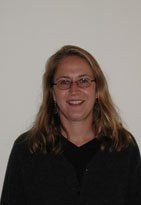Kimberly Hall
Planning for bird conservation in managed forest: Do simple demographic data improve habitat quality predictions from a spatially-explicit management model?
Abstract
In order to pro-actively plan to protect wide-ranging species such as migratory birds that occupy vast areas within our northern forests, conservation workers need to be able to take a hypothesis-testing approach to forest management. I propose to examine to what extent adding simple data on bird demography for three species of conservation concern, rather than simply using measures of bird abundance, improves the quality of predictions from a spatially-explicit model. This research focus represents a test of a key assumption in many conservation-related models, that the density of individuals in a habitat is a reliable indicator of habitat "quality" or conservation value. This work will be done as part of an interdisciplinary project at Michigan State University (MSU), where a group of faculty and graduate students is developing an integrated ecological and economic model of forest and deer management in northern Michigan. The MSU model will provide a much-needed management tool for planners trying to understand the local and landscape-scale effects of various approaches to deer and timber management, including ecological effects on birds and the value to residents of changes in bird populations.
Mentors
Dr. Jiangou Liu in the School of Natural Resources and Environment at the Michigan State University
Undergraduate Education
B.A. Biology, Dartmouth College, 1989
Graduate Education
M.S. Resource Ecology and Management, University of Michigan, 1996;
PhD, Resource Ecology and Management - Terrestrial Ecology, 2001. Focus on the effects of forest management promoting high-density deer populations on the habitat selection, site fidelity, and breeding success of a migratory songbird in Michigan's Upper Peninsula
Current Title and Affiliation
Climate Change Ecologist/Terrestrial Resilience Project Manager at The Nature Conservancy, North American Region
https://www.nature.org/science-in-action/our-scientists/kim-hall.xml
You can find Kim on Google Scholar here and on Twitter: @kim_hall


